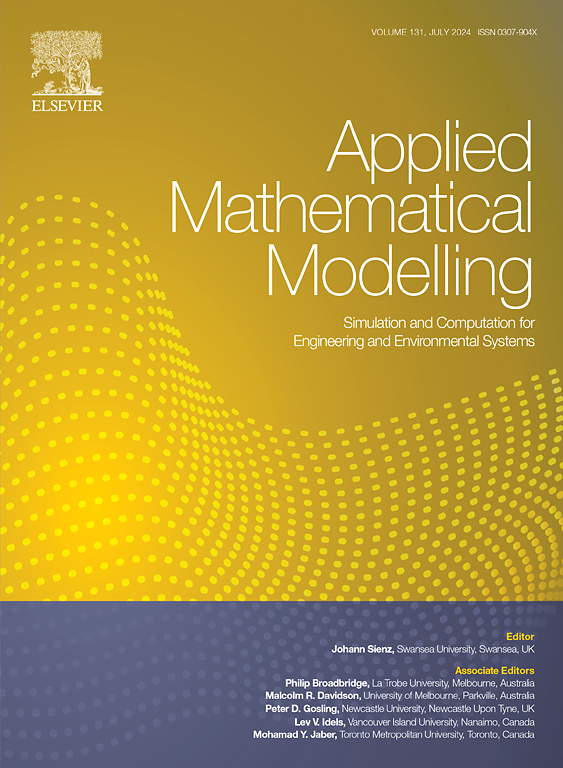具有灵活的自相关和互相关的二元圆角z值自回归模型
IF 4.4
2区 工程技术
Q1 ENGINEERING, MULTIDISCIPLINARY
引用次数: 0
摘要
离散时间序列数据包括计数值和Z值。计数时间序列模型在文献中得到了很好的研究,单变量z值模型也有自己的进步和进展,但双变量z值模型很少。现有的二元z值模型是用细化算子构造的,这限制了模型的灵活性。最近重新发现的单变量均值保持四舍五入算子可以打破这些限制,我们将其推广到双变量情况。本文基于一种新的二元Skellam分布和二元保均值四舍五入算子,介绍了一类新的二元z值自回归模型,即不存在两两相互作用的p阶模型和具有两两相互作用的一阶模型,它提供了非常灵活的自相关和互相关范围。给出了新模型的平稳性条件和一些随机性质(包括无条件均值、方差、自相关函数、互相关函数和条件概率分布的表达式)。给出了一种易于实现的两步条件最小二乘估计方法及其大样本渐近性质。通过仿真和三个不同领域的实际数据实例,证明了新模型与现有模型相比的优越性。本文章由计算机程序翻译,如有差异,请以英文原文为准。
Bivariate rounded Z-valued autoregressive models with flexible auto- and cross-correlations
Discrete time series data include count values and values. Count time series models have been well studied in the literature, and univariate -valued models also receive their own advances and progress, but the bivariate -valued models are rare. Existing bivariate -valued models are constructed using the thinning operator, which limits their flexibility. The recently rediscovered univariate mean-preserving rounded operator can break these limits and we extend it to the bivariate case. This paper introduces a novel class of bivariate -valued autoregressive models based on a new kind of bivariate Skellam distribution and the bivariate mean-preserving rounded operator, a pth-order model without pairwise interaction and a first-order model with pairwise interaction, which provides very flexible range of auto- and cross-correlations. The stationarity conditions and some stochastic properties (including expressions for unconditional mean, variance, autocorrelation function, cross-correlation function, and conditional probability distribution) of the new models are given. An easy-to-implement two-step conditional least squares estimation procedure for the parameters and related large-sample asymptotic properties are provided. Simulations and three real data examples from different fields are illustrated to demonstrate the superiority of the new models compared with existing ones.
求助全文
通过发布文献求助,成功后即可免费获取论文全文。
去求助
来源期刊

Applied Mathematical Modelling
数学-工程:综合
CiteScore
9.80
自引率
8.00%
发文量
508
审稿时长
43 days
期刊介绍:
Applied Mathematical Modelling focuses on research related to the mathematical modelling of engineering and environmental processes, manufacturing, and industrial systems. A significant emerging area of research activity involves multiphysics processes, and contributions in this area are particularly encouraged.
This influential publication covers a wide spectrum of subjects including heat transfer, fluid mechanics, CFD, and transport phenomena; solid mechanics and mechanics of metals; electromagnets and MHD; reliability modelling and system optimization; finite volume, finite element, and boundary element procedures; modelling of inventory, industrial, manufacturing and logistics systems for viable decision making; civil engineering systems and structures; mineral and energy resources; relevant software engineering issues associated with CAD and CAE; and materials and metallurgical engineering.
Applied Mathematical Modelling is primarily interested in papers developing increased insights into real-world problems through novel mathematical modelling, novel applications or a combination of these. Papers employing existing numerical techniques must demonstrate sufficient novelty in the solution of practical problems. Papers on fuzzy logic in decision-making or purely financial mathematics are normally not considered. Research on fractional differential equations, bifurcation, and numerical methods needs to include practical examples. Population dynamics must solve realistic scenarios. Papers in the area of logistics and business modelling should demonstrate meaningful managerial insight. Submissions with no real-world application will not be considered.
 求助内容:
求助内容: 应助结果提醒方式:
应助结果提醒方式:


